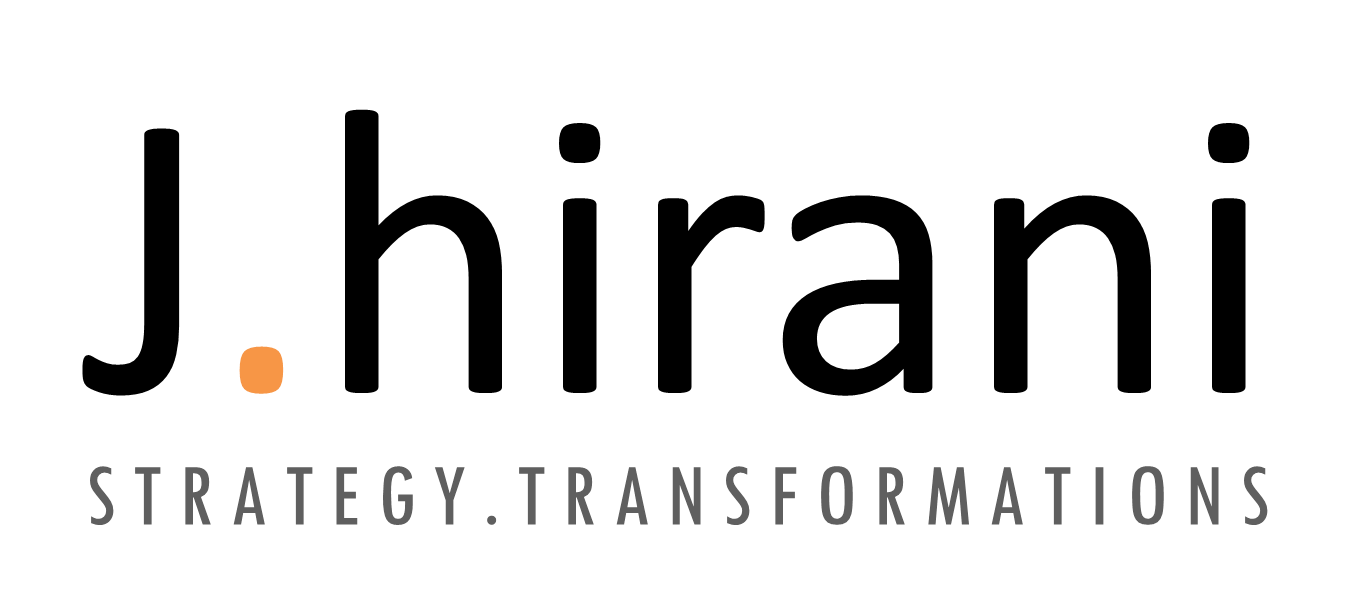Operational Excellence
Operational excellence is how organization achieves all its desire performance goals of operation each time and every time, operational excellence not only talks about achieving goals at lowest cost, with highest quality and with higher productivity level once, however it emphasize on how organization can create an environment which helps organization achieve operational excellence in a consistent manner. Achieving excellence once is not operational excellence, but gaining consistently is the key to proudly say that organization has achieved operational excellence. To put in better perspective, operational excellence is a pitch perfect execution of organizations strategy -better than the industry.
Benefits of Operational Excellence
Customer Satisfaction: Organization never wants their customer to go away, in this changing world it is difficult for any organization to hold their customers and increase at the same time. For any strategy, may it be personalized product & services, or generic product & services, they key is to satisfy the customer need, by infusing operation excellence as a fundamental, organization can achieve desire customer satisfaction level through multiple tools and practices.
Low Cost: An operational excellence strategy aims to accomplish cost leadership. Here the focus is made on standardizing and automating work processes and work procedures to streamline the operations and helps in reducing the cost, organization can achieve low cost on process and operation which will ultimately help them in other investment opportunities.
High Quality: If organization has identified quality parameter for their product and services, then it has to be monitor, by practicing or adopting operational excellence tools / principles, organization can achieve desire quality product and services which ultimately satisfy the customer need.
High Level Productivity: Through tools and principles of operational excellence which includes amalgamation of technologies, organization can achieve their productivity goals as well, which helps in faster turnaround times not only for product or service output but as a system whole.
So what it takes to be operationally excellence

Understand customer needs
With appropriate knowledge of technology and customers organization can know the need of the customer and can plan the product/service accordingly. Technology such as data analytics and artificial intelligence will tell you the customer buying trend, what customer need, what they are not getting. Once the data is analyzed and interpreted, organization can really makes breakthrough in their operations which helps achieving customer satisfaction.
Define OE & Objective and goals
In past organization were only able to check the performance of the process but now the performance of an individual can also be checked through the metrics. Different organizations have different definitions to achieve operational excellence so before making any strategies to achieve the same, which organizations first have to take into consideration that what does the operation excellence means for their organization and then to move forward.
Understanding objective and goal: To move further, organization shall identify objective and goals which they desire to achieve, starting from macro to micro. This helps in creating right expectation and alignment which actually going to help deliver the final outcome.
Identify what changes are required
Once objective and goals are identified, it is essential to know what will it require to achieve those. It shall include
– People
– Process
– Technology
– Policies
– Culture
Excellence Measurement & Improvement
A continuous improvement mind set and attitude is essential to become operational excellence and it should start from top to bottom. It is essential for organization to establish culture of excellence OR culture of continuous improvement, this helps in journey of operational excellence. This can be achieved with the help of right mind set, practice and right processes. Result is a byproduct of process; continuous improvement has to be adapted with right mind set and attitude as part of process from top leaders. To achieve the operational excellence in the organization everybody should know the importance of the same and what impact it can create once it has been achieved. It is the culture where people will do the right thing in right way every time. At the same time an environment has been made which will attract the best people and will cultivate the staff growth. After implementing the same organization also has to monitor, mentor and manage the progress for the same so that consistency is maintained.
Tools which help in Journey of Operational Excellence
Lean Management
Lean management will help operation excellence organizations to create flow, for both material and information with maximizing value through reduction or elimination of non-value adding activities. Lean management should be treated as a long term health program for the business not as a temporary diet.
Lean Methodology Tools
1. 5S: 5S helps in elimination of a waste from a poorly organized work area It works like this,
a. Sort- (Eliminating things which is not needed)
b. Set In Order- (Organizing the remaining items)
c. Shine- (Cleaning and Inspecting the area)
d. Standardize- ( Make standards for the above remaining items)
e. Sustain- 9Regularly apply the standards)
2. Just in Time: JIT helps in reducing inventory levels, improves cash flow and reduces space requirements, it is a methodology aimed primarily at reducing times within the production system as well as response times from suppliers and to customers.
3. Kaizen: Kaizen is a strategy where employees work together proactively to achieve regular, incremental improvements in the manufacturing process, combining the collective talents of a company to create an engine for continually eliminating waste from manufacturing processes.
4. Overall Equipment Effectiveness (OEE): This method is a framework for measuring productivity loss for a given manufacturing process. Three categories of loss are tracked in it:
a. Availability (Example- Downtime)
b. Performance (Example-Slow cycles)
c. Quality (Example- Rejects)
5. PDCA: It is an methodology for implementing improvements. The steps are,
a. Plan- Establish plan and expect results
b. Do- Implement plan
c. Check- Verified expected results achieved
d. Act – Review and assess, do it again
6. Root Cause analysis: A problem solving methodology that focuses on resolving the underlying problem instead of applying quick fixes that only treat immediate symptoms of the problem. A common approach is to ask why five times – each time moving a step closer to discovering the true underlying problem. Also ensures that a problem is truly eliminated by applying corrective action to the “root cause” of the problem.
Six Sigma
Six Sigma strategies seek to improve the quality of the output of a process by identifying and removing the causes of defects and minimizing impact variability in manufacturing and business processes, it will help to improve the process and maintaining the consistency in it.
Six Sigma Tools
1. The 5 whys: The 5 Whys is a tool used to determine the root cause of problems within your organization. It looks like this,
a. Firstly writing down the problems one is having so that everybody’s knows the same and can emphasize on the same.
b. Then to ask why the problem occurred
c. If first answer is not the root cause of the problem, ask why again
d. Repeat this step at least 5 times to find the true root cause of the problem
2. Value Stream Mapping: A value stream map shows the flow of materials and information in the processes and was developed to help in improvement and optimize flow throughout your organization.
There are three things value stream helps in identifying,
a. Value-enabling activities
b. Value-adding activities
c. Non-value adding activities
3. Pareto Chart: Pareto Chart helps in graphical display of the differences between groups of data, allowing Lean Six Sigma teams to identify the largest issues facing the process. The y-axis represents a cumulative percentage and a defect frequency, while the x-axis represents the groups of response variables displayed as bars, such as machine design or machine parts.
4. FMEA: Failure Modes and Effect Analysis helps businesses identify and eliminate weak points in the early stages of any product or process. FMEA is used to review components, assemblies, and subsystems to identify failure modes and their causes and effects.
5. Poka yoke (Mistake Proofing):This is a Japanese term that means mistake proofing. It’s a process by which employees work to identify and eliminate the causes of human errors throughout the manufacture and production processes.
Manufacturing Segment
In this blog, we will mention three most versatile manufacturing segments i.e. Apparel Manufacturing, Architecture Hardware and engineering. In India overall manufacturing segment accounts for 16-17% of Indian GDP as on 2016, with an aim to make it more contributor and make India self-dependent, Indian government has already taken target for manufacturing segment. Government is targeting to increase manufacturing segment contribution to Indian GDP from 16-17% to 25% by 2025. Now, if you interpret this from business context, then current and future manufacturing companies need to increase their scalability and eye for more opportunity, growth and diversification with innovations. Here, operational excellence can play pivotal role in success or failure for organizations to achieve their objective and goals.
Operational Excellence and Apparel Manufacturing
With a global competition getting intense, all sizes of organization are aiming towards achieving the operation excellence by eliminating the waste in their value chain which will ultimately drive organization towards low cost and high quality goods and services which will help organizations to achieve growth. The key focus of operation is to reduce the throughput time which is the time of raw material input and till the final production happens, most of the organization faces the challenge in this part and that’s were operation excellence helps.
Challenges and how to overcome
High Inventory (RM, WIP or FG): The methods like six sigma and lean management will be applied here in order to review that what is the cause of WIP been piled up is there a communication gap between the departments, is there a lengthy process which is not necessary is to be find out first. Then, new process plan has to construct which will deliver quality goods within the time decided.
High rework and rejection: Rework and rejection occurs when there are loopholes in the organizations operations in order to achieve the operation excellence organizations have to align their end-to-end operations and to educate all departments related to it. This can be done by making inter Department structure and policies which will include incentives so that people will work efficient and effectively without compromising the quality.
Timely supply from vendors: This is the common problem organizations face where venders don’t provide material on time thus the cycle of process from raw material to dispatch gets delay. To eliminate this kind of problem organizations can setup a digital system into the organization which will automatically request vendors once the stock goes down from a particular level this will ultimately effect the decrease in cycle time of the process as a whole.
In a nutshell, operation excellence help organization in achieving an ideal production process where throughput time is minimal, inventory is balanced, bottleneck operation is reduced, changeover time is negligible, defects are zero and critical path is well defined. This all is achieved by streamlining operations, improving in quality and processes and improving in capacity if needed.
How operation excellence impacts Architectural Hardware
This recession has hit hard globally to the architectural hardware products, with significant profitability challenges. The operational excellence will help organization to bring back performance on track, by improving and educating the bottom line as well as implementing the methods of operation excellence such as six sigma and lean management.
Challenges and how to overcome
Assembling parts from different manufacturers under one roof: Most of the manufacturing factories are procuring some small parts from different manufactures so the cycle time of the raw material to the production reduces, if the manufacturers want to control the cycle time then instead of procuring the parts from different manufacturers they should build under one roof. By doing so transportation cost will be eliminated and organizations will be able to produce the customized product based on their customer requirement and also throughput time will be reduced which will result into timely delivery of the product with no compromise in quality.
Bottom Line Improvement: With the changing scenarios, the organizations have to create a learning organization and to introduce a new mindset which will emphasize on continuous improvement. In order to achieve the improvement organization has to apply the lean methodology into the organization where the professionals educate the bottom line peoples how do they achieve the operation excellence and what benefits they will get if they achieve the same.
Operational Excellence and Engineering


Author:
 Harsh Pavani, a PGDM graduate in Finance is associated with J.hirani as a Business Analyst, who is a great believer of ethics and likes to stay quiet and humble. He is always ready to learn something new and has worked closely in the industries of Apparel manufacturing and hospitality
Harsh Pavani, a PGDM graduate in Finance is associated with J.hirani as a Business Analyst, who is a great believer of ethics and likes to stay quiet and humble. He is always ready to learn something new and has worked closely in the industries of Apparel manufacturing and hospitality
Guide:
Saurin Parikh, who has done  Masters in International Business and Management Information System from Texas, is also a Certified Business Analyst. He started as a business analyst with Jagdish Hirani & Associated, is currently leading the core operations of transformation projects. He has wide experience in industries like home furnishing, diamond, tourism, food sectors etc. He is Observant, Conscious about facts, Patient, Positive, gives attention to detail and believes in total Completeness.
Masters in International Business and Management Information System from Texas, is also a Certified Business Analyst. He started as a business analyst with Jagdish Hirani & Associated, is currently leading the core operations of transformation projects. He has wide experience in industries like home furnishing, diamond, tourism, food sectors etc. He is Observant, Conscious about facts, Patient, Positive, gives attention to detail and believes in total Completeness.
Success Mantra – “You have to touch ground (foundation) to make perfect organizations. Right methods with consistent approach are bound to yield results”
About J.hirani: J.hirani is a Strategic Transformation team which works as a growth partner for different organisations in various industries by providing services like Agile transformation, Scenario mapping, Strategic alignment, Balance scorecard, Digital transformation, Incubating new ventures, Operation excellence and Aligning human capital.
©J.Hirani, Operation Excellence in Apparel Manufacturing, Architectural Hardware & Engineering Industry, September 2020. All rights reserved.



